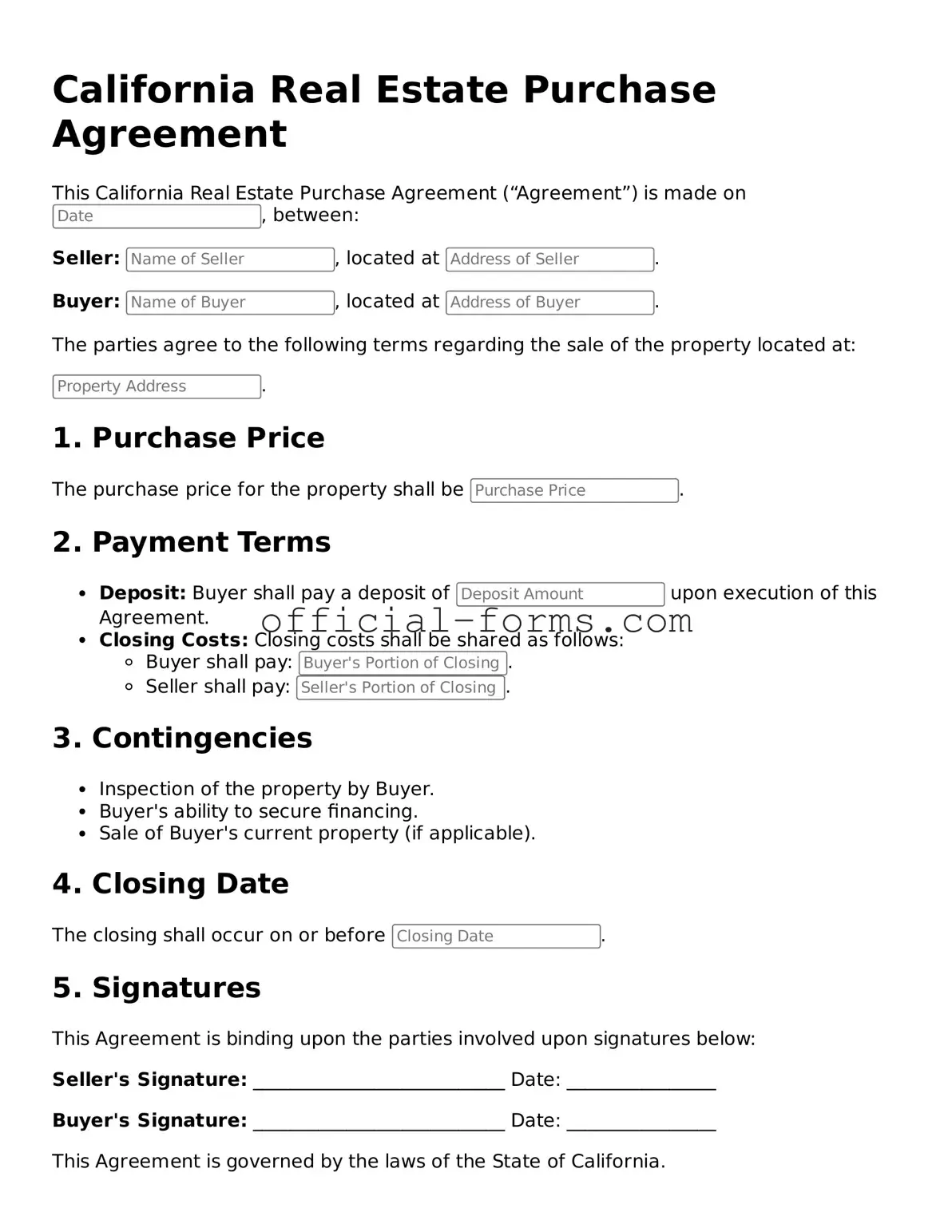Official California Real Estate Purchase Agreement Document
The California Real Estate Purchase Agreement is a legally binding document that outlines the terms and conditions under which a buyer agrees to purchase a property from a seller. This form serves as a crucial tool in real estate transactions, ensuring that both parties understand their rights and responsibilities. By clearly detailing the specifics of the sale, it helps facilitate a smoother transfer of property ownership.
Open My Real Estate Purchase Agreement Now
